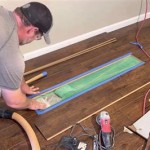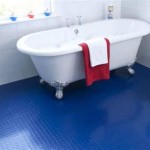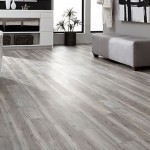Recycling Old Wood Flooring: A Comprehensive Guide
Wood flooring, prized for its durability, aesthetic appeal, and sustainable qualities, often outlives its initial purpose. Instead of relegating old wood flooring to landfills, recycling provides a viable and environmentally responsible alternative. This process involves repurposing the material for new applications, reducing waste, conserving natural resources, and minimizing the environmental impact associated with manufacturing new flooring.
Recycling old wood flooring presents various challenges and opportunities. Success requires careful assessment, proper handling, and a thorough understanding of the different recycling options. This article provides a comprehensive overview of the process, outlining key considerations and practical strategies for effectively recycling old wood flooring.
Assessing the Condition and Type of Wood Flooring
Before initiating the recycling process, a comprehensive assessment of the old wood flooring is crucial. This involves evaluating its condition, identifying the type of wood, and determining the presence of any contaminants. These factors significantly influence the feasibility and suitability of various recycling methods.
The condition of the flooring is a primary determinant of its recyclability. Factors to consider include the extent of surface damage, such as scratches, dents, and stains; the presence of rot or decay; and any structural weaknesses. Minor surface imperfections can often be addressed through refinishing, while more severe damage may necessitate cutting out and replacing affected sections. Wood that is significantly decayed or structurally unsound may be unsuitable for reuse as flooring but could still be recycled for other applications, such as composting or wood pellets.
Identifying the type of wood is also essential. Hardwoods, such as oak, maple, and cherry, are generally more durable and can withstand multiple refinishing cycles, making them ideal for recycling as flooring. Softwoods, such as pine and fir, are less resistant to wear and tear and may be better suited for less demanding applications. Knowing the species of wood allows for informed decisions regarding its suitability for different recycling options and helps ensure compatibility with existing materials.
The presence of contaminants is another critical consideration. Old wood flooring may contain lead-based paint, asbestos-containing adhesives, or other hazardous materials. Testing for these contaminants is essential to protect both the environment and the health of individuals involved in the recycling process. If contaminants are detected, specialized removal and disposal procedures are necessary, often requiring professional assistance. Flooring treated with certain preservatives or containing embedded nails, staples, or screws also requires specific handling to minimize potential risks.
Exploring Recycling Options for Old Wood Flooring
Once the condition and type of wood flooring have been assessed, several recycling options become available. These options range from direct reuse to repurposing the material for alternative applications, each with its own set of advantages and considerations.
Direct Reuse: This is the most environmentally friendly option, as it involves reusing the flooring in its original form. This can be achieved by reinstalling the flooring in a different location or donating it to a salvage yard or non-profit organization. Direct reuse minimizes the need for processing and reduces the consumption of new resources. However, this option is only feasible if the flooring is in good condition and matches the aesthetic requirements of the new location.
Refinishing and Reselling: If the flooring has surface imperfections but is otherwise structurally sound, refinishing and reselling can be a viable recycling option. This involves sanding down the top layer of the flooring to remove scratches, stains, and other blemishes, followed by applying a new finish to protect the wood and enhance its appearance. Refinished flooring can be sold through online marketplaces, consignment shops, or directly to homeowners. This option not only extends the life of the flooring but also provides a cost-effective alternative to buying new materials.
Repurposing for Other Applications: Old wood flooring can be creatively repurposed for a variety of other applications. It can be used to create furniture, such as tables, benches, and headboards; wall paneling; decorative accents; or even smaller craft projects. Repurposing adds value to the material and prevents it from ending up in a landfill. The inherent character and patina of old wood flooring can add a unique charm to these repurposed items.
Chipping and Composting: If the flooring is not suitable for reuse or repurposing, it can be chipped and used as mulch, compost, or animal bedding. This option diverts the material from landfills and provides valuable nutrients to the soil. However, it is essential to ensure that the flooring is free of contaminants before chipping and composting, as these contaminants could negatively impact the environment.
Energy Recovery: In some cases, old wood flooring can be used as a fuel source for energy recovery. This involves burning the wood to generate electricity or heat. While this option is less desirable than direct reuse or repurposing, it can still be a more environmentally responsible alternative to landfill disposal. However, it is crucial to ensure that the combustion process is properly controlled to minimize air pollution.
Best Practices for Recycling Wood Flooring
To maximize the success of recycling old wood flooring, it is essential to follow best practices throughout the process. These include careful removal, proper storage, and responsible disposal of any non-recyclable components.
Careful Removal: The removal process significantly impacts the condition and recyclability of the flooring. Gently prying up the flooring planks or tiles, avoiding damage to the wood, is crucial. Using appropriate tools, such as a pry bar and a hammer, and taking care not to split or break the wood, will help preserve its usability. Removing nails, staples, and other fasteners carefully will also prevent damage and make the recycling process easier.
Proper Storage: After removal, proper storage is essential to prevent deterioration of the flooring. Storing the wood in a dry, well-ventilated area will prevent moisture damage, such as rot or mildew. Stacking the planks or tiles neatly and securely will prevent warping and other structural issues. Protecting the wood from direct sunlight will also prevent fading and discoloration. Proper storage ensures that the flooring remains in good condition until it can be recycled.
Responsible Disposal: Not all components of old wood flooring can be recycled. Adhesives, underlayment, and other non-recyclable materials must be disposed of responsibly. Separating these materials from the recyclable wood will simplify the recycling process and prevent contamination. Following local regulations for waste disposal and utilizing designated recycling facilities for non-recyclable materials will help minimize environmental impact.
Partnering with Recycling Professionals: Working with experienced recycling professionals can significantly enhance the effectiveness of the recycling process. These professionals have the expertise and equipment to properly assess the condition of the flooring, identify suitable recycling options, and ensure that the material is handled and processed in an environmentally responsible manner. They can also provide valuable guidance on removing contaminants and disposing of non-recyclable materials.
Considering the Environmental Impact: Throughout the recycling process, it is essential to consider the environmental impact of each decision. Choosing the most environmentally friendly recycling option, minimizing transportation distances, and utilizing sustainable practices whenever possible will help reduce the overall environmental footprint. Promoting the benefits of recycling old wood flooring to others can also help encourage wider adoption of this sustainable practice.
Recycling old wood flooring presents a significant opportunity to conserve resources, reduce waste, and protect the environment. By carefully assessing the condition of the flooring, exploring available recycling options, and following best practices for removal, storage, and disposal, individuals and businesses can contribute to a more sustainable future. The key is to approach the process with a commitment to environmental responsibility and a willingness to explore creative solutions for repurposing and reusing this valuable material.

Antique Reclaimed Wood Flooring Olde Ltd

If Wood Could Talk Installing Reclaimed Flooring Hardwood Floors

7 Leftover Hardwood Flooring Projects For Beginners Sawdust Sisters

Amazing Wood Recycling Project Reuse Old To Make The Most Effective Table Recycled Projects Floors

How To Recycle Wood Flooring Tarkett Sustaility

Creative Ways Of Recycling Old Wood Recycled Coffee Table Design

Pallet Flooring Everything You Need To Know

Antique Reclaimed Wood Flooring Olde Ltd

Can Old Flooring Be Recycled Best At Blog

7 Leftover Hardwood Flooring Projects For Beginners Sawdust Sisters
Related Posts








